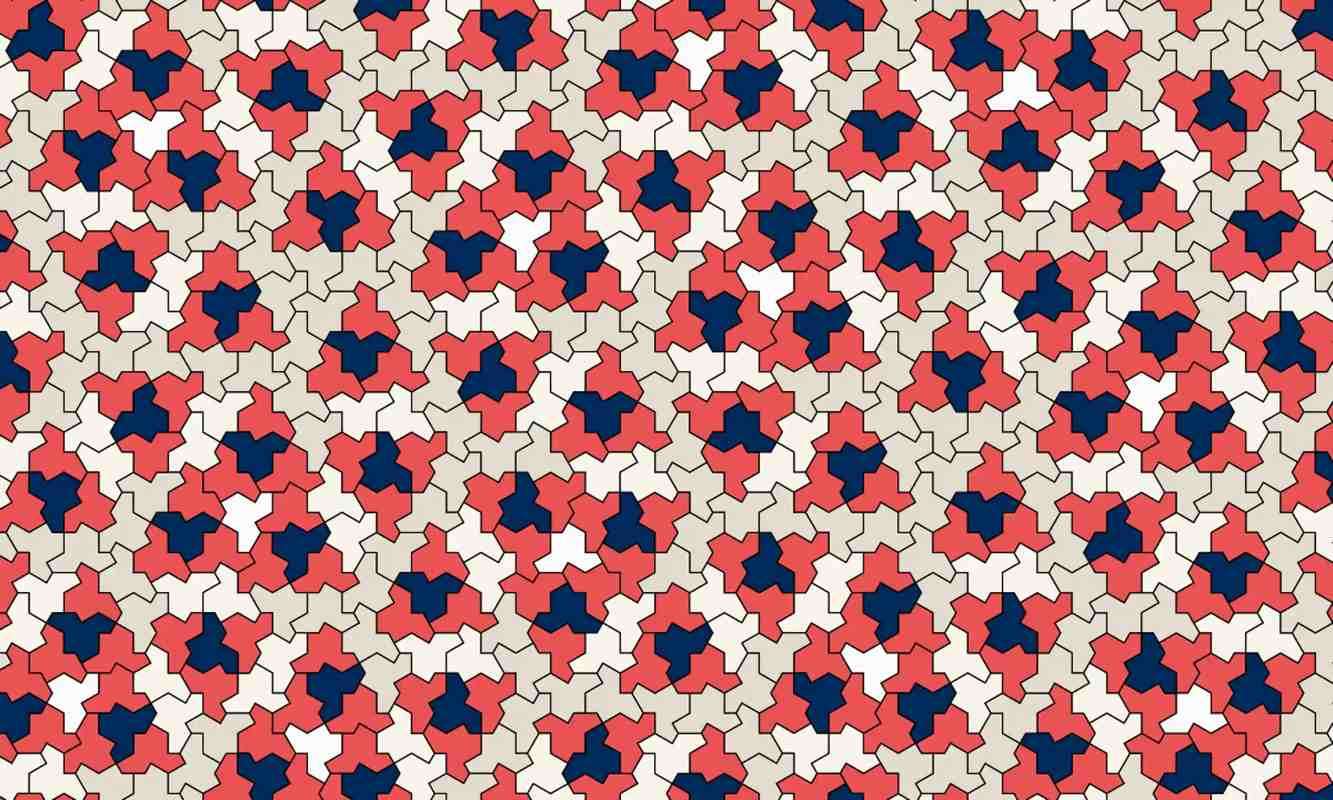Microbot That Targets and Captures Damaged Cells is Real-Life Pac-Man
A tiny controllable robot acts as a real-life 'Pac-Man'—identifying and gobbling up damaged cells in living things.

Mathematics is full of difficult problems, and one that had been outstanding for several decades has finally been solved.
Is there a shape that could interlock with itself ad infinitum without ever replicating a pattern? Turns out, there is.
A 13-sided shape called "the hat" and another one called "the turtle" have both been found to create irreplicable designs regardless of how many shapes are interlocked, whether 100, 400 quadrillion, or something equally ridiculous.
Such a shape is known as an ‘aperiodic monotile' or an "Einstein shape", using both the German wording for ‘one shape' and the name of a certain famous physicist.
The discovery was largely the work of an Englishman named David Smith who lives in the East Riding, Yorkshire. Once he made his discovery using an online geometry program, he shared it with a professor of computer science and mathematics at the University of Waterloo in Canada, Dr. Craig Kaplan.
Kaplan then engaged a team of colleagues to work on Smith's shape-Dr. Chaim Goodman-Strauss, a University of Arkansas mathematician, and Dr. Joseph Myers, a software developer in Cambridge, England.
It was these three that begin tinkering with "the hat" to see if it could be, in fact, an aperiodic monotile that had no limit. The New York Times reported the team found that not only was there "the hat," and "the turtle" but that these two shapes were linked to a whole family of Einstein shapes.
"The miracle is that this little tile disrupts order at all scales," Goodman-Strauss told the Guardian. "These tiles are just sitting next to each other and somehow have these effects at any length scale: miles, 10 miles, 100bn light years, these little guys are somehow causing effects at these arbitrary long distances."
The discovery won't likely yield any breakthroughs in theoretical physics or anything of that nature, but the implications of the shape for art, interior design, and architecture are exciting: materials made in the hat or turtle shapes guarantee irreplication when tiled onto a floor, a building facade, or a painting.
"I've just been blown away by the outpouring of interest and people making their own tiles, their own drawings-somebody made cookies in the form of this thing-and quilts," Goodman-Strauss said.
"To me, the human aspect of this is really incredibly gratifying, that there's all these people coming together and enjoying this thing, and it really means that this thing is gonna live for quite a long time."
WATCH the tiles in action, but don't concentrate too hard…
SHARE This Wild Discovery With Your Friends On Social Media…
Be the first to comment